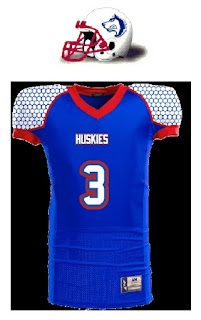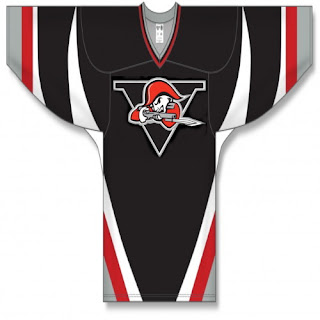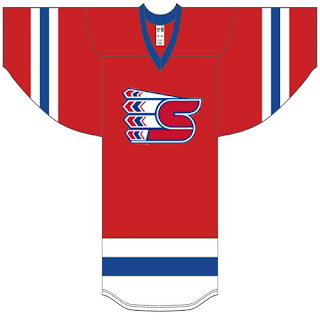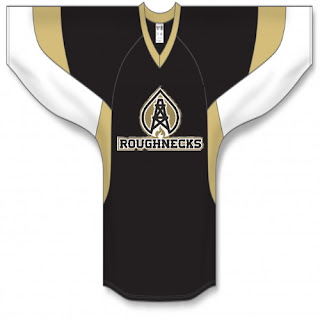Although I did cover most of this in the first Alt Canada post... https://marymargretcallahan.blogspot.com/2020/01/alt-history-canada.html
I wanted to do a dedicated sports post with a lot more details. We know from the previous posts that Canada is much bigger and has about triple the actual population, about 90 million in 2019. Meanwhile in North America, The United States is smaller with about half of it's actual population, about 180 million in 2019, which still makes it twice as populated as Canada but both countries have a different dynamic. There is also the New England States, a separate country of about fifteen million people. The effects of economics in this alternate timeline are also a factor when it comes to professional and amateur sports. In the actual timeline, the financial power of the US has had a major influence on the Olympic games sites as well as the salaries of pro athletes. You will see a big difference in this alt timeline as the US and Canada have close to equal financial power worldwide.
Olympics
With a bigger population, Canada would be a bigger splash on the world stage of the Olympics, the US less so. In this timeline, Canada actual attends the first games in Greece in 1896. At the first Olympics, Canada picks up three medals. Still both Germany and the US protest Canada for using black athletes who they believe should not be allowed to compete. Canada continues to improve over time and usually finishes top ten in medals at the summer games, finishing ahead of the US on four occasions. After the US lifts their own ban on using black athletes in 1968, they improve dramatically. As for hosting the summer games, the US doesn't get the 1904 games. They are out bid by Berlin, Germany. The US hosts for the first time in 1924, in Philadelphia. They don't host again until 1988 in Atlanta. The US is on slate to host again in the near future, possibly in Los Angeles. Boston, of New England hosts the summer games in 1948 after WW2. Canada hosts the summer games in 1968 in Montreal. Canada hosts the games for a second time in 2012 in Chicago with a record showing in medals.
As for the Winter Olympic games, it is no contest between the US and
Canada. Canada finishes ahead of the US in every winter games and tops
the medal leaders on five occasions and has never finished lower than
fifth place. Norway, Germany, and Russia (Soviets) are the
usual top competition to Canada. Canada plays host to the winter games
five times; 1936 in Lac Placid, Champlain and there again in 1960.
Québec City plays host in 1980 and Calgary hosts in 1994 and again in
2018. The US hosts only one time, 2006 in Denver. Canada wins gold in
men's hockey fifteen times, with the Soviets winning seven, Russia once,
Sweden twice and the Czechs once.

As for pro sports in North America, Lacrosse is the first sport played in
Canada. Natives introduce the game to the settlers. It is played
throughout the country and is the official sport. Professional leagues
start up in the 1930s and continue to present day with the National
Lacrosse League. The NLL currently has twelve teams. Lacrosse stadiums
hold between 18000 to 30000 with average game attendance at about 21000.
There are TV contracts but players don't earn the big money like
football and hockey players do. The average salary in 2015 is £100000
Canadian a year with the top contract at £400000. Every year, the Joseph
Brant Cup is given to the league winner. Indoor lacrosse is a very
popular minor league sport.
NLL team uniforms 2020:
Baseball in its modern form was first played in Beachville, Ontario in
1838. It caught on in New England and then into the US in New York. It
never makes it big in Canada though, with the competition of football
and lacrosse as summer sports. It is mostly a youth game. Some players
who become gifted in the sport end up moving to the US to play as it is
their big money sport. The US professional baseball leagues have twenty
teams and players earn big money. Top contracts pay $5000000 US a year.
Baseball and soccer are the only two big money professional team sports.
Individual sports like golf, boxing, and stock car racing are also big
draws. Horse racing is the biggest draw of all though in the US.
Baseball is popular in New England and Boston has a pro team that plays
in the US pro leagues.
Basketball is another sport started in Boston by a Canadian. It catches
on and becomes a big youth sport. It is very popular in high schools and
universities. It is popular in the US too. Some small, regional pro
leagues pop up here and there throughout North America but without a
major pro league until 1970 in Canada.The spark for basketball came in
1965 when a boxing promoter in Chicago put together an all black player
basketball team from players he knew from playgrounds and gyms in the
city and called them the Chicago Ambassadors. They wore gaudy uniforms
of red and white with gold maple leafs and traveled from city to city
challenging any team, pro, university or all star to exhibition games.
Their skill level was second only to their level of fan interaction and
fun. They typically destroyed opponents by lopsided scores like 120-45
on average. They dunked and blocked shots, dribbled with unseen finesse
and played above the rim where few could. They played all over North
America but were banned in more than half of the US states. They played
overseas to sold out crowds and entertained millions and became
ambassadors of the game making it a truely world wide sport. It showed a lot of black athletes in the US the
potential that they might achieve and made the game huge in black
neighbourhoods throughout the US. Canada had won every Olympic gold medal in basketball prior to 1968, starting in 1948 when it was introduced to the games. Since then, the US has won more than Canada. The Soviets won gold once as did Brazil. In the more recent games, it has become more competitive and is anyone's to win. Unfortunately for the Canadian
Basketball Association, the league didn't pan out as they had hoped,
with most franchises losing money from low attendance and the lack of TV
money as the season conflicted with hockey for fan revenue. The CBA
folded in 1974 after five of the original eight teams went bankrupt. The
Ambassadors still entertain crowds world wide.

Football comes to Canada in the early 1860's from Britain in the forms
of Rugby and soccer. Association football (soccer in North America)
never hits it off in Canada but it does in the US. Canada loves the
Rugby football. Canada adapts the twelve man "League" version of the
game in many athletic clubs. The first pro league opens in Ontario in
1870 with three teams from Toronto and three from Hamilton and one each
from Kitchener, Guelph, and Secord (Ste Catherines). The universities in
Ontario, Michigan and Québec all play too. McGill University (Montreal)
introduces it to Harvard in Boston in 1880. It catches on there and
soon becomes part of the New England universities athletic programs.
Autumn games between schools in New England draw enormous crowds of up
to 30000 fans. The pro game in Canada is bigger than the university
version though for drawing crowds. By 1890, stadiums pop up all over
Ontario, Québec and Michigan and the Canadian Football League is formed.
By that time, the game has been refined to an original Canadian game
that allows blocking by the five forwards and players wearing some
padding and leather helmets. Rules are set down that are adapted across
the country for all levels of the game. The New England schools make an
adaption in 1915 adding the forward pass. This increases the fan's love
of the game and attendance. Canada finally decides to adapt the forward
pass in 1923. Football is a hit all over Canada with a league popping up
on the west coast in 1907. In 1909, Lord Earl Gray, the Governor
General, who is a big fan of the game, commissions the Gray Cup for the
Football champion of Canada. Originally presented to the winner of the
CFL, the west coast league challenged the CFL champions for the cup in
1920. After that it became tradition for the Western League Champion to
take on the Eastern CFL champions for the cup. In 1948, the two leagues
merged and became the Canadian Football League with fourteen teams. Expansions have built the league up to twenty teams. To date, the Chicago Cardinals
have won nine Gray Cups, the most of any team, followed by the Hamilton
Tigers with eight, then the Strathcona Eskimos and Duluth Packers with
seven each. University teams play for the Vanier Cup, with Queens
University (Frontenac) winning the most titles with ten. Pro team
stadiums hold between 45000 to 70000 fans and player salaries in 2015
range from £200000 Canadian to the top salary of £2.4 million a year.
The prime sport in Canada is however, hockey. Its origins are not
documented but it is believed that soldiers in garrison in Frontenac
attempted to play lacrosse outdoors in the winter in the early 1800s.
They found it easier to play on solid ice in the harbour rather than in
snow and used a rock instead of a ball. They took the webbing out of
their sticks and just used the wooden parts of their sticks to pass and
shoot the rock. The rock eventually got replaced by a rubber puck for
safety reasons. The game caught on and became a winter past time all
over Ontario and Québec. In 1850, a game between the top Toronto club
and the top Montreal club drew a crowd at of 20000 in the middle of
January in Frontenac's lacrosse stadium which had its field frozen over
for the event. Hockey fever took over Canada. The game was played in all
parts of the country by 1870.
In 1886, Governor General, Lord Stanley commissioned a trophy, Lord
Stanley's Cup for the top hockey team in Canada. It was originally
awarded to amateur teams but several pro leagues vied for the cup. No
clear playoff format could be found. Eventually, in 1910, taking the
lead of the Gray Cup, the top professional eastern team (three leagues)
and the top pro western team (two leagues), played a five game series to
determine a Stanley Cup champion. In 1900, there were 40 professional
teams. That was chopped down to 30 after 1927. In 1928, there were two
leagues, the Western Hockey League, with twelve teams and the Canadian
Hockey League with sixteen teams in the east and south. In 1935, with
large indoor arenas being built, the top ten teams got together to form
the National Hockey League. The criteria was an arena
that could hold at least 14000 people. As arenas popped up and demand
grew, the prosperous NHL expanded. A number of expansions took place between 1974 and in 1998. The last two teams, Boston and Grand Rapids, joined for the start of the 2019-2020 season making the
NHL twenty-eight teams. Boston is the first and only city outside of Canada to have an NHL team.
At present, the average NHL arena hold 19000 fans, with most teams
selling out. Average salary for an NHL player is £1.2 million per season
and the top contract is £6.3 million per year. The Montreal Maroons
hold the most Cup titles with seventeen, although four were before the
merger into the NHL. Detroit Red Wings are second with thirteen, two
prior to the NHL forming. Toronto Maple Leafs have twelve, with four
coming before the NHL. Seattle has nine with one coming before the NHL
merger.
NHL team uniforms in 2020:
I posted the league standings for the 2020 season as if there was no pandemic in this alt history timeline. The same goes for the Olympics.







































































No comments:
Post a Comment